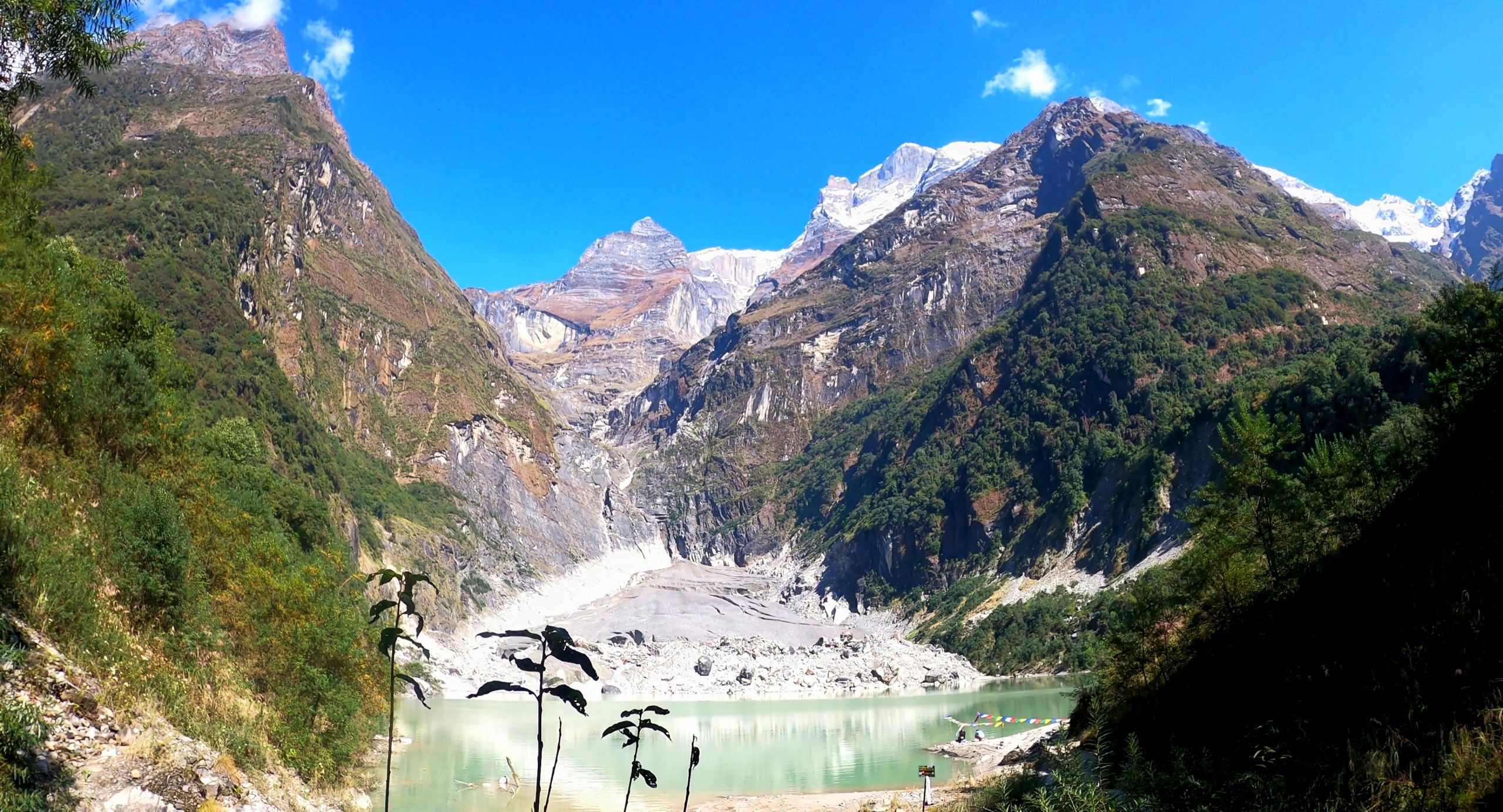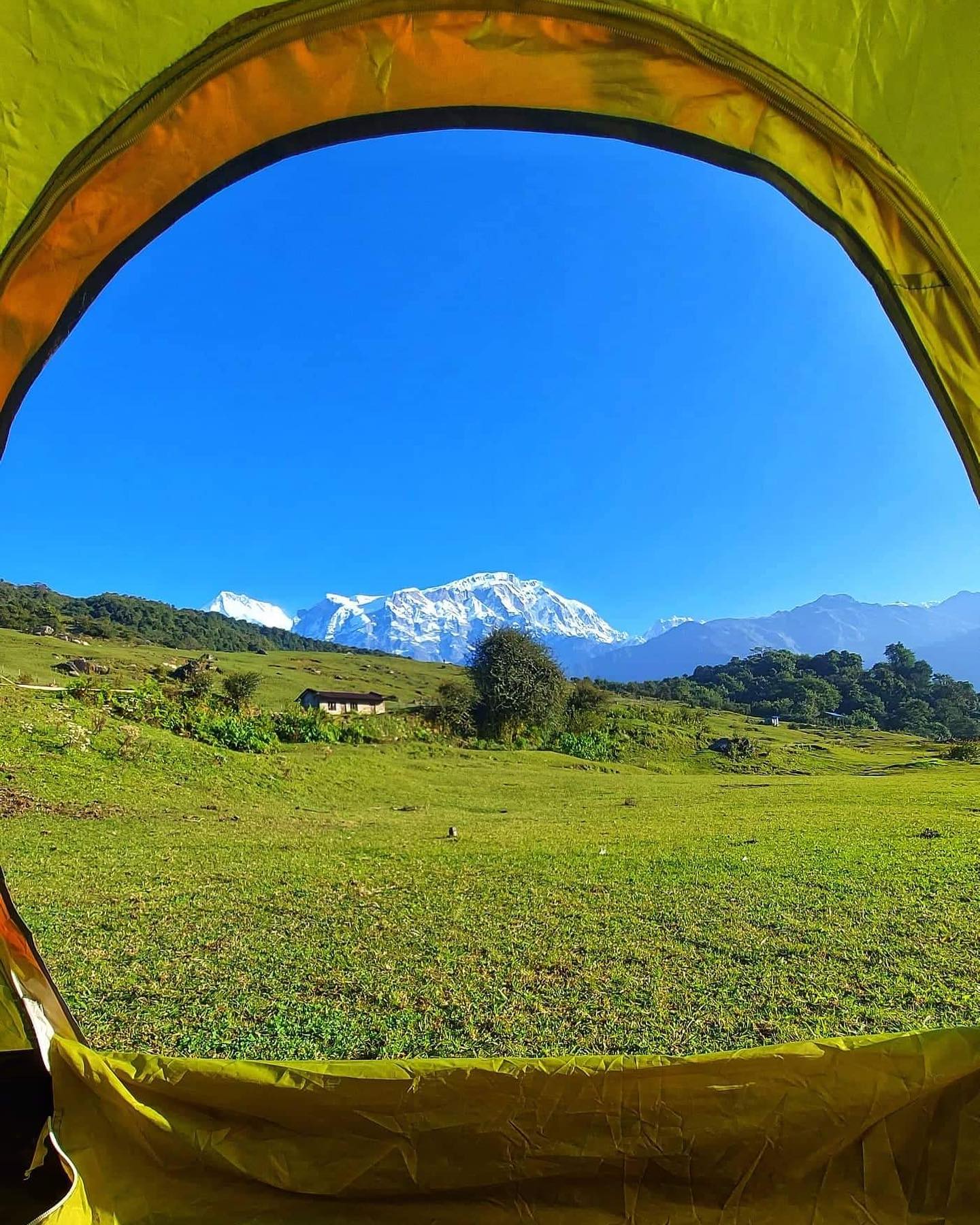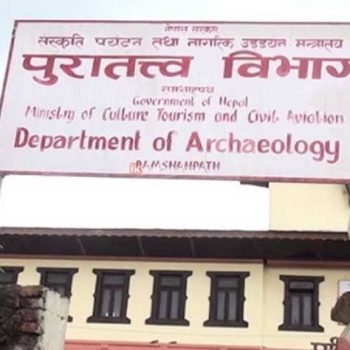Trek to Kahphuche Lake was truly a healing experience after the Covid-19 pandemic

To travel, to experience and to learn: this is to live
Tenzing Norgay
The past one and a half years must have shattered our perceptions about life and perhaps given us a lot of lessons too. The outbreak of a deadly coronavirus pandemic caught us off guard, bringing a whirlwind of uncertainty. Some of us are still trying to come to terms with the loss of our close relatives to the pandemic, while others dread to recall the agonizing days when their relatives were hospitalized with Covid-19 related illness during the peak of the pandemic.
By now we have become accustomed to wearing masks, using hand-sanitizers, and washing our hands frequently. It is needless to mention how the coronavirus-induced lockdowns and restrictions forced us to change the way we live our lives. Normal life was thrown out of gear and people were forced to confine themselves indoors in order to maintain the required social distancing and to prevent the spread of the virus.
The pandemic dealt a huge blow to the economic activities, affecting a number of sectors like tourism, trade, production, and health etc. Hundreds of thousands of jobs were lost due to the pandemic, let alone the psychological distress the pandemic had on the people.
The only thing people could do during the lockdown was to stay at home and walk down the memory lane and savor all those good memories when people were free to travel. People had not imagined that the country would be hit by two waves of the pandemic back-to-back, prolonging the uncertainty.
However, the time has changed and the future looks good—at least for the next few months. Now with the decline in the number of daily Covid-19 cases and surge in vaccination, people have started coming out of their homes. The tourism sector, which was battered by the pandemic, is gradually reviving with the increase of domestic tourism.
After staying in home for almost two years with the constant fear of contracting Covid-19, we four friends made a plan to visit Kahphuche Lake, the lowest altitude glacier lake in the world. Located at an altitude of 2546 metres above the sea level, the lake is located inside the Gurung village Sikles of Kaski district in the Annapurna region.
We were so elated at the thought of travelling outside the Kathmandu Valley after being confined to homes for about two years. Then we immediately prepared an itinerary for the trek.
As per our plan, early in the morning of October 26, we hopped on a bus to Pokhara. Upon reaching the lake city, we bought groceries, among necessary things, for the trek and spent the night there. The next day, we took a taxi to Kahun Khola. The taxi driver charged us Rs 800 which could be negotiated but as we were so excited for the trip we didn’t bargain the fare.

We had our breakfast in Kahun Khola. When we were having our breakfast, we saw a group of four young people carrying bags and trekking gears heading towards the parking area of the jeeps.
Later, we came to know that they are also riding the same jeep which we had booked the day before.
As the jeep headed towards the next destination, they started becoming friendly with us, cracking jokes and laughing with each other. As we became more familiar with each other, they told us that they were from Amar Singh Chowk of Pokhara and also heading to Kahphuche Lake. So we banded together to go to the lowest glacier lake of the world.
After a five-hour jeep ride, we reached our first station, Sikles. As we were already hungry, we went directly to a homestay where we had ordered for our lunch. We were served Dal, Bhat and Tarkari, one of the most typical meals in Nepal, for lunch.

After having a delicious lunch, we rested for about half-an-hour, and decided to walk towards Hugu Goath, the second destination of our trudge.
In the meantime, the homestay owner (Bikash dai) showed us the best and shortest route to Hugu Goath. He also arranged a place for us to stay in Hugu Goath.
Heeding Bikash Dai’s advice, we decided to walk continuously for the next five to six hours to reach Hugu Goath, as it was already 2:30 pm.
After walking around half an hour, we reached a suspension bridge. The homestay owner had told us that we should pray and chant some mantras to ward off evil spirits once we reach the bridge.

So, one of the group members started chanting the mantras for everyone as taught by Bikash Dai to protect us from the evil spirits. When I recall that moment, it still sends chills down my spine.
There is a myth in the village that the evil spirit could lead us down a wrong path if we did not pray.
After crossing the bridge, we started walking up a steep hill which was quite difficult and treacherous. But the villagers have installed railings for the safety of the people. Though we started feeling exhausted, we were trying to push ourselves to take more steps. But, the exotic sounds of birds chirping and Madi River gurgling in the background made us forget our fatigue; in fact, it recharged us.

After walking for the next one hour, we came across a group of people who were heading towards Sikles from Kahphuche Lake. We asked some questions like how long will it take to reach Hugo Goth and how the weather was in Kahphuche Lake. We chit-chat for sometime before continuing our journey.
When they said that the phone networks won’t be accessible after that place, we decided to make a call to the family back home.
After walking for another 20 minutes, we reached a forest full of bamboo plants and also saw a waterfall on the other side.

Then all of a sudden, the rain started. But we were prepared for that and wore our raincoats. After some time we saw a jaw-dropping waterfall called Edi, the first attraction of our journey. We feasted our eyes on the waterfall, took some photographs near the waterfall and carried on our walk agreeing to have a good time during the return as we were already running late to reach Huge Goth before the sunset.
Then we decided to take a last tea and coffee break. However, we had not realized that our real adventure had just begun.

It started getting darker. The road was narrow and steep and we had no idea how far Hugu Goath was from there. We thought Hugu Goath was not that far from there. We were surprised when we met a group of people, descending towards Sikles, who told us that it would take around two to three hours more to reach Hugu Goath.
We turned our mobile phones’ flash lights on and started moving ahead. After walking for around 40 minutes, we saw distant lights illuminating. We breathed a sigh of relief thinking that it could be our destination.
It would have taken us just around 30 minutes if the road was flat.
Upon walking further, we saw three lights ahead of us. We were so glad that we were not alone in the forest. We thought that they heard our sound and were waiting for us.
After we met them, we started walking together and came to know that they were from India. The trio said that they had not booked a place to stay that night. After some time, Prakash Gurung, host of Hugu Goath, along with his friends came to receive us midway. When we reached Hugu Goath at around 7 pm our happiness knew no bounds. Prakash Dai said that he was startled by our walking. We talked to him and also arranged a room for the Indian trekkers.

Later, after having dinner, Prakash Dai arranged wood for us and we made a bonfire. We sat around the fire and talked about our journey to Hugu Goath from Sikles. As we were tired and fatigued we decided to go to bed.
With excitement, the next day we woke up early in the morning, had breakfast and headed towards the glacial lake. After walking around two hours we reached our destination, the place which was on our bucket list.
The moment was surreal to witness the lake surrounded by mountains. The only thing that disappointed us was that the water was not clear. The torrential rainfall that lashed the region for the past three days had made the water murky.
Nevertheless, we enjoyed the surrounding views and took some photos at the lake.

After staying at the lake for around one hour, we returned to Hugu Goath where we had kept our belongings. We had our lunch there at around 11 am, took a little rest and decided to climb down to Sikles.
As we had a lot of time, we decided to walk slowly and make time for enjoying nature and taking photos. After walking for around six hours, we reached Sikles before dusk where our host was waiting for us with a delicious dinner.
Before having dinner, we sat around the fire for a while to warm ourselves.
After having dinner, we went to bed. The next morning we went to the Sikles view point from where we saw an idyllic scene of green pasture in front of a breathtaking mountain range which made our morning.

After spending around an hour, we came back to the homestay and had our breakfast. Later, Bikash Dai and his wife bade farewell to us by offering Tika and garlands and wished for a safe trip. Then we took a jeep to Pokhara.
It was an amazing experience. Personally, I believe, the trek had a miraculous impact on my mental health after experiencing the uncertainty and fear in the time of pandemic. Kahphuche Lake trek is becoming popular among the Nepali trekkers for its uniqueness and natural beauty. This can be a perfect place for those who are looking for a short trek.

Photos: Achitra Thieng














